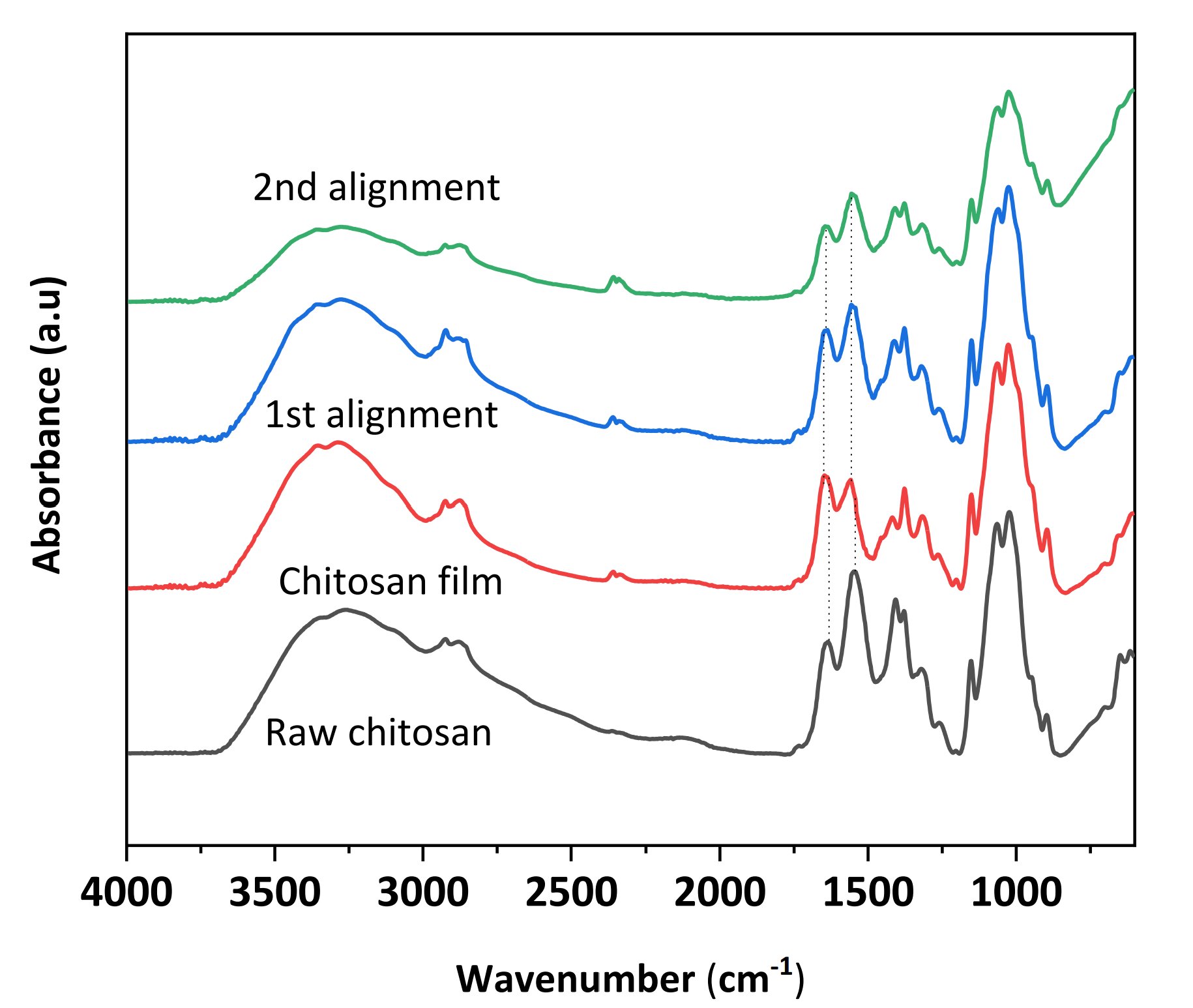The wings of a butterfly consist of chitin, which is an organic polymer found in the shells of arthropods and other insects. When a butterfly emerges from its cocoon during metamorphosis, it unfurls its wings gradually to reveal their full beauty.
During this process, the chitinous material dehydrates while blood flows through the butterfly’s veins, resulting in forces that rearrange the material’s molecules and provide the necessary strength and stiffness for flight. This natural combination of forces, water movement, and molecular organization serves as the inspiration for Associate Professor Javier G. Fernandez’s research.
Working alongside colleagues from the Singapore University of Technology and Design (SUTD), Fernandez explores the potential of chitinous polymers as sustainable materials for engineering applications.
In their latest study, titled “Secondary reorientation and hygroscopic forces in chitinous biopolymers and their use in passive and biochemical actuation,” published in Advanced Materials Technologies, the research team sheds light on the adaptability and molecular changes of chitinous materials in response to environmental fluctuations.
“We have demonstrated that chitinous polymers retain their natural ability to harness various forces, molecular organization, and water content to generate mechanical movement and produce electricity without requiring external power sources or control systems,” explains Fernandez, emphasizing the unique characteristics that make chitinous polymers energy-efficient and biocompatible smart materials.
Chitin, the second most abundant organic polymer in nature after cellulose, is found throughout various ecosystems. It can be sustainably sourced from multiple organisms, including urban waste, as demonstrated by the SUTD research team.
In their study, the researchers extracted chitinous polymers from discarded shrimp shells to create films approximately 130.5 micrometers thick. They studied the effects of external forces on these chitinous films, focusing on changes in molecular organization, water content, and mechanical properties. The researchers observed that, similar to the unfolding wings of butterflies, stretching the chitinous films rearranged their crystalline structure, resulting in tighter molecular packing and decreased water content.
Originally possessing characteristics similar to commodity plastics, the chitinous films were transformed into materials resembling high-end and specialized plastics. Unlike synthetic polymers, which are inert, the reorganized chitinous films exhibited autonomous relaxation and contraction in response to environmental changes, mirroring the adaptive qualities of certain insects’ shells. This ability allowed the chitinous films to vertically lift objects weighing over 4.5 kilograms.
To showcase the engineering applications of these biocompatible films, the research team assembled them into a mechanical hand. By controlling the intermolecular water of the films through environmental changes and biochemical processes, the team generated enough force for the hand to execute a gripping motion. Impressively, the gripping force amounted to 18 kilograms, more than half the average grip strength of an adult.
This biochemical means of generating force also suggests the seamless integration of chitinous films into biological systems, making them suitable for biomedical applications such as artificial muscles and medical implants.
In a separate demonstration, the team utilized the material’s response to humidity changes to harvest energy from the environment and convert it into electricity. By attaching the films to a piezoelectric material, the mechanical motion resulting from humidity changes was converted into electrical currents capable of powering small electronics.
Fernandez’s proof-of-concept study highlights how the mechanical characteristics and embedded functionalities of chitin can be replicated, pointing to its potential use in engineering and biomedical fields. He believes that materials like chitin play a crucial role in the transition towards a more sustainable paradigm, which he refers to as the biomaterial age.
“Chitin serves many complex functions in nature, from forming the wings of insects to constructing the protective shells of mollusks. Its engineering applications are evident. Understanding and utilizing chitin in its natural form is essential for developing new engineering applications within a framework of ecological integration and low energy,” concludes Fernandez.
More information: Balasubramanian Rukmanikrishnan et al, Secondary Reorientation and Hygroscopic Forces in Chitinous Biopolymers and Their Use for Passive and Biochemical Actuation, Advanced Materials Technologies (2023). DOI: 10.1002/admt.202300639
Citation: A butterfly’s first flight inspires a new way to produce force and electricity (2023, July 25) retrieved 26 July 2023 from https://phys.org/news/2023-07-butterfly-flight-electricity.html
This document is subject to copyright. Apart from any fair dealing for the purpose of private study or research, no part may be reproduced without the written permission. The content is provided for information purposes only.
Denial of responsibility! TechCodex is an automatic aggregator of the all world’s media. In each content, the hyperlink to the primary source is specified. All trademarks belong to their rightful owners, and all materials to their authors. For any complaint, please reach us at – [email protected]. We will take necessary action within 24 hours.

Jessica Irvine is a tech enthusiast specializing in gadgets. From smart home devices to cutting-edge electronics, Jessica explores the world of consumer tech, offering readers comprehensive reviews, hands-on experiences, and expert insights into the coolest and most innovative gadgets on the market.


